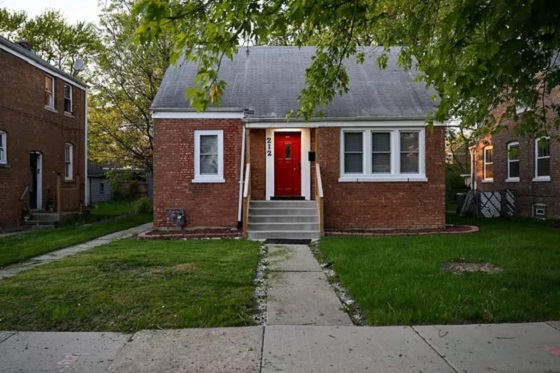Energy
Canadian policymakers should quickly rethink our energy and climate policies

From the Fraser Institute
In the wee hours of Nov. 6, Donald Trump provided a subtle but clear signal about the direction he will pursue as president regarding climate policies. In his victory speech he gave a nod to Robert F. Kennedy Jr.’s decision to join forces with MAGA saying, “He wants to do some things, and we’re gonna let him go to it. I just said, but Bobby, leave the oil to me. We have more liquid gold, oil and gas. We have more liquid gold than any country in the world. More than Saudi Arabia. We have more than Russia. Bobby, stay away from the liquid gold.”
People need to understand that Trump 2.0 is a different entity. He did not build his comeback movement by pandering or watering down his priorities. He reached out and either won people over to his side or sent them packing. A major example of this was Elon Musk, who during the first Trump administration resigned from the White House business advisory council to protest Trump’s withdrawal from the Paris climate treaty. Now Musk is all-in on MAGA and is set to play a lead role in a major downsizing of the administration.
When Trump secured the endorsement of Bobby Kennedy it was based on issues on which they could find agreement, including anti-corruption efforts and addressing the chronic disease burden. But Kennedy had to leave his environmentalism at the door, at least the climate activist part of it.
Trump’s remarks about energy during the campaign were unmistakeable. When he made the quip about wanting to be dictator for a day it was to close the border and “drill drill drill.” When asked how he would reduce the cost of living he said he would rapidly expand energy production with a target of cutting energy costs by at least 50 per cent. And on election night he reiterated: the United States has the oil, the liquid gold, and they’re going to use it.
U.S. climate policy will soon no longer be a thing. The Biden administration chose to focus on extravagant green energy subsidies under the Inflation Reduction Act. They were easy to bring in and will be just as easy for Trump to eliminate, especially the ones targeted at Democrat special interest groups. The incoming Trump administration will not settle simply for stalling on new climate action, it’s more likely to try to dismantle the entire climate bureaucracy.
In 2016 Trump did not understand the Washington bureaucracy and its ability to thwart a president’s plans. He learned many hard lessons merely trying to survive lawfare, resistance and open insubordination. It took three years for him to get a few people installed in senior positions in the climate area who could begin to push back against the vast regulatory machinery. But they simply did not have the time nor the capacity to get anything done.
This time should be different. Trump’s team has spent years developing legal and regulatory strategies to bring full executive authority back to the Oval Office so it can execute on plans quickly and efficiently. His top priority is hydrocarbon development and his team is in no mood for compromise. As to the climate issue, Trump recently remarked “Who the hell cares?”
That’s the reality. Now policymakers in Canada must decide what will be appropriate to ask of Canadians in terms of shouldering the costs of climate policies.
There’s one legal issue that Trump has thus far not addressed but that his administration will need to confront if it wants to drill drill drill. There has been an explosion of climate liability lawsuits in U.S. courts, where states, municipalities and activist groups sue major players in the fossil fuel industry demanding massive financial damages for alleged climate harms. There’s even a new branch of climate science called Extreme Event Attribution, which was explicitly developed to promote flimsy and arbitrary statistical analyses that support climate liability cases. Such cases are also popping up in Canada, including the Mathur case in Ontario, which the appellate court recently brought back from defeat.
Both Canada and the U.S. must act at the legislative level to extinguish climate liability in law. There is no good argument for letting this play out in the courts. The cases are prima facie preposterous: the emitters of carbon dioxide are the fuel users, not the producers, so liability—if it exists—should be attached to consumers. But then we would have an unworkable situation where everyone is liable to everyone, each person equally a victim and a tortfeasor. Climate policy belongs in the legislature not the courts and the “climate liability” movement is simply a massive waste of time and resources. It must be stopped.
Canada was already out of step with the U.S. in its mad pursuit of the federal Emission Reduction Plan. While the carbon tax is top of mind for voters, it’s but a small part of a larger and costlier regulatory onslaught, most recently supplemented by a new emissions cap on the western oil and gas sector. With the U.S. poised to sharply change direction, Canada now needs a complete rethink of our own energy and climate policies.
Author:
Automotive
Federal government should swiftly axe foolish EV mandate

From the Fraser Institute
Two recent events exemplify the fundamental irrationality that is Canada’s electric vehicle (EV) policy.
First, the Carney government re-committed to Justin Trudeau’s EV transition mandate that by 2035 all (that’s 100 per cent) of new car sales in Canada consist of “zero emission vehicles” including battery EVs, plug-in hybrid EVs and fuel-cell powered vehicles (which are virtually non-existent in today’s market). This policy has been a foolish idea since inception. The mass of car-buyers in Canada showed little desire to buy them in 2022, when the government announced the plan, and they still don’t want them.
Second, President Trump’s “Big Beautiful” budget bill has slashed taxpayer subsidies for buying new and used EVs, ended federal support for EV charging stations, and limited the ability of states to use fuel standards to force EVs onto the sales lot. Of course, Canada should not craft policy to simply match U.S. policy, but in light of policy changes south of the border Canadian policymakers would be wise to give their own EV policies a rethink.
And in this case, a rethink—that is, scrapping Ottawa’s mandate—would only benefit most Canadians. Indeed, most Canadians disapprove of the mandate; most do not want to buy EVs; most can’t afford to buy EVs (which are more expensive than traditional internal combustion vehicles and more expensive to insure and repair); and if they do manage to swing the cost of an EV, most will likely find it difficult to find public charging stations.
Also, consider this. Globally, the mining sector likely lacks the ability to keep up with the supply of metals needed to produce EVs and satisfy government mandates like we have in Canada, potentially further driving up production costs and ultimately sticker prices.
Finally, if you’re worried about losing the climate and environmental benefits of an EV transition, you should, well, not worry that much. The benefits of vehicle electrification for climate/environmental risk reduction have been oversold. In some circumstances EVs can help reduce GHG emissions—in others, they can make them worse. It depends on the fuel used to generate electricity used to charge them. And EVs have environmental negatives of their own—their fancy tires cause a lot of fine particulate pollution, one of the more harmful types of air pollution that can affect our health. And when they burst into flames (which they do with disturbing regularity) they spew toxic metals and plastics into the air with abandon.
So, to sum up in point form. Prime Minister Carney’s government has re-upped its commitment to the Trudeau-era 2035 EV mandate even while Canadians have shown for years that most don’t want to buy them. EVs don’t provide meaningful environmental benefits. They represent the worst of public policy (picking winning or losing technologies in mass markets). They are unjust (tax-robbing people who can’t afford them to subsidize those who can). And taxpayer-funded “investments” in EVs and EV-battery technology will likely be wasted in light of the diminishing U.S. market for Canadian EV tech.
If ever there was a policy so justifiably axed on its failed merits, it’s Ottawa’s EV mandate. Hopefully, the pragmatists we’ve heard much about since Carney’s election victory will acknowledge EV reality.
Daily Caller
Trump Issues Order To End Green Energy Gravy Train, Cites National Security


From the Daily Caller News Foundation
By Audrey Streb
President Donald Trump issued an executive order calling for the end of green energy subsidies by strengthening provisions in the One Big Beautiful Bill Act on Monday night, citing national security concerns and unnecessary costs to taxpayers.
The order argues that a heavy reliance on green energy subsidies compromise the reliability of the power grid and undermines energy independence. Trump called for the U.S. to “rapidly eliminate” federal green energy subsidies and to “build upon and strengthen” the repeal of wind and solar tax credits remaining in the reconciliation law in the order, directing the Treasury Department to enforce the phase-out of tax credits.
“For too long, the Federal Government has forced American taxpayers to subsidize expensive and unreliable energy sources like wind and solar,” the order states. “Reliance on so-called ‘green’ subsidies threatens national security by making the United States dependent on supply chains controlled by foreign adversaries.”
Dear Readers:
As a nonprofit, we are dependent on the generosity of our readers.
Please consider making a small donation of any amount here.
Thank you!
Former President Joe Biden established massive green energy subsidies under his signature 2022 Inflation Reduction Act (IRA), which did not receive a single Republican vote.
The reconciliation package did not immediately terminate Biden-era federal subsidies for green energy technology, phasing them out over time instead, though some policy experts argued that drawn-out timelines could lead to an indefinite continuation of subsidies. Trump’s executive order alludes to potential loopholes in the bill, calling for a review by Secretary of the Treasury Scott Bessent to ensure that green energy projects that have a “beginning of construction” tax credit deadline are not “circumvented.”
Additionally, the executive order directs the U.S. to end taxpayer support for green energy supply chains that are controlled by foreign adversaries, alluding to China’s supply chain dominance for solar and wind. Trump also specifically highlighted costs to taxpayers, market distortions and environmental impacts of subsidized green energy development in explaining the policy.
Ahead of the reconciliation bill becoming law, Trump told Republicans that “we’ve got all the cards, and we are going to use them.” Several House Republicans noted that the president said he would use executive authority to enhance the bill and strictly enforce phase-outs, which helped persuade some conservatives to back the bill.
-

 International2 days ago
International2 days agoChicago suburb purchases childhood home of Pope Leo XIV
-

 Daily Caller2 days ago
Daily Caller2 days agoBlackouts Coming If America Continues With Biden-Era Green Frenzy, Trump Admin Warns
-

 Daily Caller2 days ago
Daily Caller2 days ago‘I Know How These People Operate’: Fmr CIA Officer Calls BS On FBI’s New Epstein Intel
-

 Business1 day ago
Business1 day agoPrime minister can make good on campaign promise by reforming Canada Health Act
-

 Automotive13 hours ago
Automotive13 hours agoFederal government should swiftly axe foolish EV mandate
-

 Alberta13 hours ago
Alberta13 hours ago‘Far too serious for such uninformed, careless journalism’: Complaint filed against Globe and Mail article challenging Alberta’s gender surgery law
-

 Frontier Centre for Public Policy1 day ago
Frontier Centre for Public Policy1 day agoNew Book Warns The Decline In Marriage Comes At A High Cost
-

 Economy1 day ago
Economy1 day agoThe stars are aligning for a new pipeline to the West Coast








